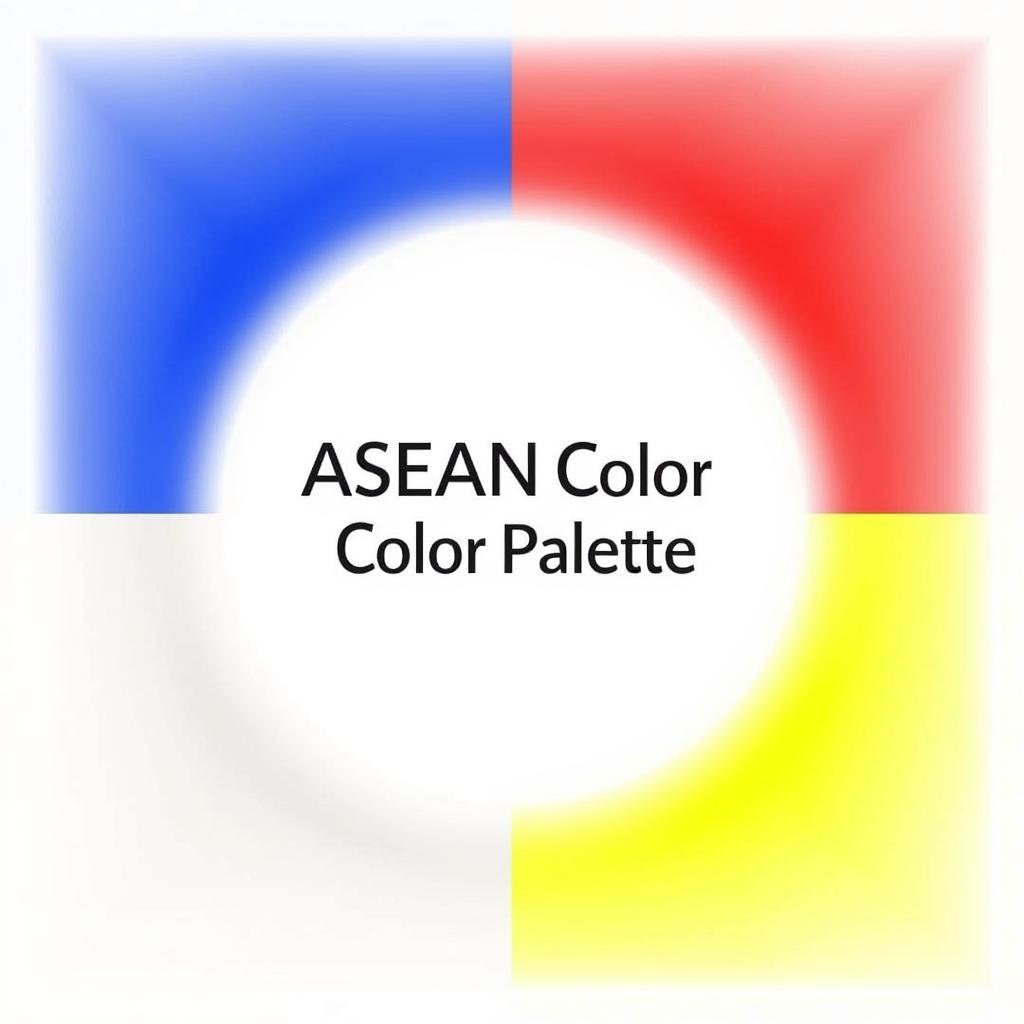The ASEAN symbol, a vibrant and dynamic emblem, represents the unity and interconnectedness of the Association of Southeast Asian Nations. This article explores the rich symbolism embedded within the ASEAN logo, delving into its design elements and their significance in representing the spirit of this dynamic regional bloc.
Understanding the Elements of the ASEAN Symbol
The ASEAN symbol is more than just a logo; it’s a visual representation of the organization’s core values and aspirations. The circular design, reminiscent of a bundle of rice stalks, symbolizes unity, solidarity, and prosperity. The ten stalks represent the ten member states of ASEAN, bound together in their pursuit of common goals. The colors of the logo, blue, red, white, and yellow, are also significant, each representing a prominent color found in the national flags of ASEAN member states. These colors embody peace, dynamism, purity, and prosperity, reflecting the shared values of the ASEAN community.
The central circle within the logo, containing the word “ASEAN,” further emphasizes unity and togetherness. The font used is clean and modern, projecting a sense of stability and progress. The positioning of the word within the circle ensures its prominence, reinforcing the central role of ASEAN in regional affairs. Let’s delve deeper into the meaning behind each element.
The ASEAN Symbol’s Colors: A Reflection of Shared Values
The colors of the ASEAN symbol are not chosen at random. They are carefully selected to represent the shared values and aspirations of the member states. Blue symbolizes peace and stability, red represents dynamism and courage, white signifies purity and neutrality, while yellow embodies prosperity and optimism. This combination of colors creates a vibrant and harmonious image, reflecting the diverse yet unified nature of the ASEAN community.
For example, blue is a dominant color in the flags of the Philippines and Thailand, red features prominently in the flags of Singapore and Indonesia, white is present in the flags of Malaysia and Brunei, and yellow is significant in the flags of Brunei and Myanmar. This intentional inclusion of colors found in the national flags further solidifies the sense of shared identity and belonging among the member states.
 The Significance of Colors in the ASEAN Symbol
The Significance of Colors in the ASEAN Symbol
The Evolution of the ASEAN Symbol
The ASEAN symbol has undergone subtle changes throughout the years, reflecting the organization’s growth and evolution. Though the core elements have remained consistent, the design has been refined to enhance its visual impact and convey a more modern and dynamic image. These changes demonstrate ASEAN’s adaptability and forward-looking approach while preserving its fundamental principles. Check out our ASE Logo Color for more information.
The ASEAN Symbol in Everyday Life
The ASEAN symbol isn’t confined to official documents and ceremonies. It’s increasingly visible in everyday life, appearing on everything from souvenirs and merchandise to public buildings and infrastructure. This widespread use of the symbol reinforces its recognition and strengthens the sense of shared ASEAN identity among the people of Southeast Asia. The symbol serves as a constant reminder of the organization’s role in promoting regional cooperation and integration.
Why is the ASEAN Symbol Important?
The ASEAN symbol serves as a powerful visual representation of the organization’s goals and principles. It fosters a sense of unity and belonging among the member states and promotes a shared identity among the people of Southeast Asia. The symbol also plays a crucial role in raising awareness about ASEAN and its mission, both within the region and on the global stage. Looking for ASE Bannner?
Conclusion
The ASEAN symbol, with its carefully chosen elements and colors, is a powerful symbol of unity, cooperation, and prosperity. It represents the shared values and aspirations of the ten member states and serves as a constant reminder of their commitment to working together for a better future. The ASEAN symbol plays a crucial role in fostering a sense of shared identity and promoting regional integration, ultimately contributing to the peace and prosperity of Southeast Asia. For more information on the ASEAN symbols, you might find ASE Manual Black Panther useful. Don’t forget to check out ASEAN Anthem ASEAN Way.
FAQ
- What does the circular shape of the ASEAN symbol represent? The circular shape symbolizes unity, solidarity, and prosperity.
- How many rice stalks are there in the ASEAN symbol? There are ten rice stalks, representing the ten member states.
- What do the colors of the ASEAN symbol represent? Blue symbolizes peace, red represents dynamism, white signifies purity, and yellow embodies prosperity.
- Has the ASEAN symbol changed over time? Yes, the ASEAN symbol has undergone subtle changes to enhance its visual impact while maintaining its core elements.
- Where can I see the ASEAN symbol in everyday life? The ASEAN symbol can be seen on souvenirs, merchandise, public buildings, and official documents.
- Why is the ASEAN symbol important? The symbol promotes unity, raises awareness about ASEAN, and strengthens the sense of shared identity.
- Where can I learn more about ASE Chemical Symbols? Follow the link to find out more.
When you need assistance, please contact us at Phone Number: 0369020373, Email: [email protected], or visit our address: Thon Ngoc Lien, Hiep Hoa, Bac Giang, Vietnam. We have a 24/7 customer service team.

